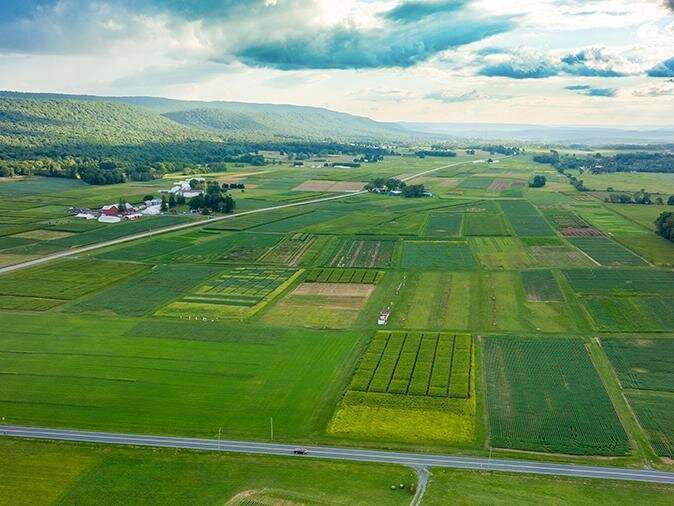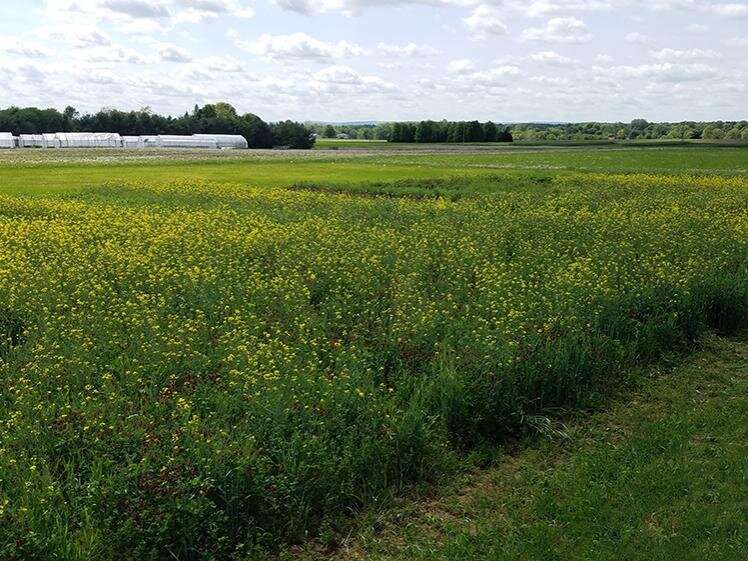Mixed cover crops capture carbon in soil, could help mitigate climate change

When it comes to adding carbon to the soil, all cover crops don't perform equally, according to a team of researchers whose new study revealed the disparity for the first time.
The research, a collaboration between Penn State, Clemson and Cornell universities, may lead to ways of sequestering more carbon in agricultural soils, according to study co-author Jason Kaye, distinguished professor of soil biogeochemistry in Penn State's College of Agricultural Sciences. Agricultural soils comprise about a third of the global land surface, and soils are the largest reservoir for carbon on Earth.
With the help of plants and microbes, soils can take carbon out of the atmosphere and trap it in the ground, helping to mitigate climate change, explained Kaye, whose research group has been experimenting with cover crops for two decades. At the same time, he added, soil carbon is crucial for supporting plant growth because it helps create healthier, more fertile soils.
"I think we're at a crucial point nationally where we're thinking about sequestering carbon in agricultural soils and wondering if cover crops can be a key tool to do that," he said. "There are a lot of questions about how much carbon could be stored, and which types of carbon. So, this research has really notable implications."
To reach their conclusions, the researchers sampled soils under monocultures (a single crop in a given area) of cover crops belonging to three plant functional types—a legume (crimson clover), a grass (triticale, a cross between wheat and rye), and a brassica (canola), as well as a mixture of these three species. The plots were part of a long-term cover-crops experiment at Penn State's Russell E. Larson Agricultural Research Center in central Pennsylvania.
The researchers measured two types of soil carbon—particulate organic matter and mineral-associated organic matter. The former is the carbon that comes mainly from plant material that drops to the soil and breaks down into small particles; the latter is the carbon that becomes physically or chemically bonded with soil minerals, like clay. Both processes involve bacteria and fungi in the soil.
Before this research, the relationship between the two types of soil carbon and cover crops was not well understood, the researchers said. Particulate organic matter is a relatively short-lived form of soil carbon, often decomposed by soil microbes in a matter of a few years. Although this means that it does not represent a long-term form of carbon sequestration, the decomposition and cycling of particulate organic matter helps support plant growth.
On the other hand, mineral-associated organic matter is a more persistent form of soil carbon that can remain in the soil for decades or even centuries. Increasing the amount of that type of soil carbon can help keep carbon out of the atmosphere over longer time periods.

The researchers recently published their findings in Global Change Biology, reporting that the soil organic carbon content was higher in all cover crops treatments than in fallow plots. Compared to the legume, soils under monocultures of grass and brassica had a higher proportion of plant-derived carbon in particulate organic matter. In contrast, soils under legumes had greater accumulation of microbial-derived carbon in mineral-associated organic matter.
The study results revealed, for the first time, that the cover crop mixture contributed to a higher concentration of plant-derived compounds in particulate organic matter, explained Ziliang Zhang, who spearheaded the study. As a postdoctoral scholar in the Department of Plant and Environmental Sciences at Clemson University when the research was conducted, he performed the huge volume of soil and data analysis involved in the study.
"In terms of the global carbon cycle, understanding how plant carbon gets into soils, and how long it stays there, that's a big deal," he said. "This study advances our fundamental understanding of how we might manage the global carbon cycle. Our discovery that the different plant species tend to create different types of carbon—that we think have different lifespans in the soil—is significant."
Identifying ways to build soil carbon has become a major research priority for climate sustainability and food security, Kaye noted, while simultaneously boosting soils' ability to support agricultural production.
"Our findings demonstrate that including a diversity of crop types on farms is key for increasing both short- and long-term soil carbon," he said. "This research provides farmers with an example of how they can build climate-friendly, fertile soils. And scientists need to identify strategies around this concept that strike a balance between helping plants grow in the short-term and locking away carbon for the long term."
More information: Ziliang Zhang et al, Cover crop functional types differentially alter the content and composition of soil organic carbon in particulate and mineral‐associated fractions, Global Change Biology (2022). DOI: 10.1111/gcb.16296
Journal information: Global Change Biology
Provided by Pennsylvania State University




















